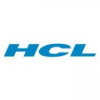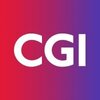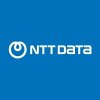
i
LTIMindtree
Filter interviews by
LTIMindtree Senior SAP APO Consultant Interview Questions and Answers
LTIMindtree Senior SAP APO Consultant Interview Experiences
1 interview found
(2 Questions)
- Q1. Optimiger contrainz setup
- Q2. Lenear and descrete difference
- Ans.
Linear and discrete are two different types of data sets. Linear data is continuous while discrete data is distinct and separate.
Linear data is continuous and can take any value within a range (e.g. temperature, weight)
Discrete data is distinct and separate, often counted in whole numbers (e.g. number of students in a class, number of cars in a parking lot)
(2 Questions)
- Q1. How do u help org
- Q2. What r u r goals
Interview Preparation Tips
Interview questions from similar companies


(3 Questions)
- Q1. SAP APO GATP and SNP
- Q2. What is APO AGATP?
- Ans.
APO AGATP stands for Advanced Global Available-to-Promise. It is a tool in SAP APO that helps in real-time ATP checks across the supply chain.
APO AGATP is a tool in SAP APO that helps in real-time ATP checks across the supply chain.
It provides a global view of available-to-promise quantities and delivery dates.
It considers various constraints like production capacity, transportation lead times, and material availabilit...
- Q3. What is APO SNP
- Ans.
APO SNP is a module in SAP APO that deals with supply network planning.
APO SNP helps in creating feasible production and procurement plans.
It considers demand, supply, and capacity constraints to optimize the supply chain.
It also helps in identifying potential bottlenecks and suggests alternative solutions.
APO SNP can be integrated with other SAP modules like PP, MM, and SD.
Examples of APO SNP functionalities include d...

I applied via Walk-in and was interviewed in May 2024. There was 1 interview round.
(5 Questions)
- Q1. Tell me the address of previous company. I mostly worked from home so did not remember the exact address. Reply: Then you have not worked .
- Q2. I don't feel that you are confident anyhow tell me the tcode for material extend.
- Q3. Tell me errors in material extend
- Ans.
Errors in material extend can include incorrect data entry, missing information, duplicate entries, and system errors.
Incorrect data entry such as wrong material number or description
Missing information like unit of measure or pricing details
Duplicate entries for the same material
System errors causing inconsistencies in material extend data
- Q4. List tables name
- Q5. You take time to answer so seems like a fresher would do a better job
Interview Preparation Tips

(2 Questions)
- Q1. Terraform questions related ones
- Q2. Devops coding and data engg

(1 Question)
- Q1. Tell me about yourself
(1 Question)
- Q1. Tell me about yourself


(1 Question)
- Q1. It is related to sap basis and cover all topics in basis.
(1 Question)
- Q1. This is also based on basis questions.
Interview Preparation Tips

I applied via Naukri.com and was interviewed before Nov 2019. There were 3 interview rounds.
Interview Questionnaire
3 Questions
- Q1. Not remembering the questions now
- Q2. Not Remembering the question because it was 4 year ago
- Q3. Not remembering the question now

SAP MM Functional Consultant Interview Questions & Answers
Tech Mahindraposted on 3 Jan 2022
I applied via Naukri.com and was interviewed in Jul 2021. There was 1 interview round.
Interview Questionnaire
20 Questions
- Q1. Common assignment type in SAP MM system ?
- Ans.
Common assignment types in SAP MM system include purchase requisitions, purchase orders, goods receipts, and invoice verification.
Purchase requisitions: Used to request the procurement of materials or services.
Purchase orders: Generated to procure materials or services from vendors.
Goods receipts: Documented when materials are received into the warehouse or stock.
Invoice verification: Process of verifying and approving
- Q2. Different info record types ?
- Ans.
Different info record types in SAP MM include standard, consignment, subcontracting, pipeline, and service.
Standard info record is used for regular procurement of materials.
Consignment info record is used when materials are stored at the customer's location but owned by the vendor.
Subcontracting info record is used when a vendor performs a specific service or process on materials provided by the company.
Pipeline info r...
- Q3. Use of document type in SAP system?
- Ans.
Document types in SAP system are used to categorize and control different types of documents.
Document types are used to differentiate between various business transactions and processes.
They help in organizing and managing documents in a structured manner.
Document types determine the number range, field selection, and processing rules for each document.
Examples of document types in SAP MM include purchase orders, goods
- Q4. Why do you use material type ?
- Ans.
Material type is used to classify and categorize different types of materials in SAP MM.
Material type helps in determining the behavior and attributes of a material in the system.
It is used to control the procurement process, valuation, and account determination for materials.
Different material types have different settings and configurations, such as whether a material is a finished product, raw material, or spare par...
- Q5. Different stock type in SAP system ?
- Ans.
Different stock types in SAP system include unrestricted stock, quality inspection stock, blocked stock, and special stock.
Unrestricted stock is available for use and can be used for any purpose.
Quality inspection stock is used for items that are undergoing quality checks.
Blocked stock is not available for use and requires special authorization to be used.
Special stock includes consignment stock, project stock, and ret
- Q6. Different Stock transfer type in SAP MM ?
- Ans.
There are several stock transfer types in SAP MM, including stock transfer between plants, stock transfer between storage locations, and stock transfer between company codes.
Stock transfer between plants: This involves transferring stock from one plant to another within the same company code.
Stock transfer between storage locations: This involves transferring stock from one storage location to another within the same p...
- Q7. Outline agreement?
- Q8. What is MRP run in SAP system?
- Ans.
MRP run in SAP system is a process that calculates material requirements based on demand and generates procurement proposals.
MRP run is used to ensure that materials are available for production and delivery to customers.
It considers various factors such as sales orders, production orders, forecasts, and stock levels to determine the quantity and timing of material requirements.
MRP run generates procurement proposals s...
- Q9. What is Contract ?
- Ans.
A contract is a legally binding agreement between two or more parties that outlines the terms and conditions of their relationship.
A contract is a written or verbal agreement.
It establishes the rights and obligations of the parties involved.
Contracts can be for the sale of goods, provision of services, employment, etc.
They typically include terms such as payment terms, delivery schedules, and dispute resolution mechani...
- Q10. Quata arrangement in SAP system ?
- Ans.
Quota arrangement in SAP system is used to define the distribution of goods or services over a specific period of time.
Quota arrangement is used to allocate quantities to different sources or vendors based on predefined rules.
It helps in maintaining a balance between multiple sources and ensures fair distribution.
Quota arrangement can be set up for both procurement and sales processes.
It can be based on various factors...
- Q11. Use of posting period in SAP system ?
- Ans.
Posting period is used to control the posting of financial transactions in SAP system.
Posting period determines the time frame during which financial transactions can be posted in SAP system.
It helps in ensuring that transactions are posted in the correct accounting period.
Posting periods can be defined for different time intervals, such as months or quarters.
Each posting period can have its own start and end dates.
Tra...
- Q12. Integral components in SAP MM ?
- Ans.
Integral components in SAP MM include material master data, purchasing, inventory management, and logistics invoice verification.
Material master data: Contains information about all materials used in the organization, such as their description, price, and storage location.
Purchasing: Involves the procurement of materials and services from external vendors, including creating purchase orders and managing supplier relati...
- Q13. Pricing procedure in MM ?
- Ans.
Pricing procedure in MM determines how prices are calculated for materials and services.
Pricing procedure is a set of condition types and access sequences that determine the calculation of prices.
It is used to determine the net price of a material or service based on various factors such as quantity, discounts, taxes, etc.
Condition types define the different elements that contribute to the price calculation, such as ba...
- Q14. Steps needed to configure pricing procedure in SAP MM ?
- Ans.
To configure pricing procedure in SAP MM, follow these steps:
Define access sequence
Assign condition types to access sequence
Define condition tables
Assign condition tables to access sequence
Define calculation schema
Assign calculation schema to pricing procedure
Define pricing procedure determination
Assign pricing procedure to relevant document types
- Q15. How can G/L account for MM account determinations be verified?
- Ans.
G/L account for MM account determinations can be verified through configuration settings and testing.
Verify the account determination configuration in transaction code OBYC.
Check the account determination procedure and account assignment category settings.
Test the account determination by creating a purchase order and checking the G/L account assignment.
Review the accounting documents and postings to ensure the correct
- Q16. How to create movement type ?
- Ans.
Movement types can be created using transaction code OMJJ.
Go to transaction code OMJJ
Enter the new movement type details
Assign the movement type to a movement type group
Save the new movement type
- Q17. What is RTP ?
- Ans.
RTP stands for 'Returnable Transport Packaging'.
RTP is a type of packaging that can be reused multiple times.
It is designed to be durable and withstand multiple trips.
RTP is commonly used in supply chain management to reduce waste and costs.
Examples of RTP include plastic pallets, reusable containers, and metal racks.
RTP can also help to reduce carbon emissions and improve sustainability.
- Q18. Sub contracting cycle on MM ?
- Ans.
Subcontracting cycle involves sending raw materials to a vendor for processing and receiving finished goods back.
Create a subcontracting purchase order with components and quantities
Issue components to vendor using MIGO transaction
Vendor processes components and returns finished goods using MIGO transaction
Receive finished goods into inventory using MIGO transaction
Invoice verification for subcontracting vendor
Settleme
- Q19. Use of Split valuation ?
- Ans.
Split valuation is used in SAP MM to assign different values to different portions of a material or product.
Split valuation allows for the differentiation of material valuation based on specific characteristics or attributes.
It helps in tracking and managing different costs associated with different portions of a material.
Examples of split valuation include assigning different values to different batches of a material ...
- Q20. How to create tax calculations procedure in MM ?
- Ans.
To create tax calculations procedure in MM, define tax codes, assign tax codes to materials, and configure tax calculation settings.
Define tax codes using transaction code FTXP
Assign tax codes to materials using transaction code MM02
Configure tax calculation settings using transaction code OVK1
Specify tax jurisdiction codes using transaction code FTXP
Define tax conditions using transaction code FV11
Assign tax condition...
Interview Preparation Tips
Skills evaluated in this interview

Interview Questionnaire
10 Questions
- Q1. All Business Scenario based questions
- Q2. What is Party Entitled to Dispose
- Ans.
A party is entitled to dispose of their own property or assets.
A party has the right to sell, transfer, or otherwise get rid of their own property.
The extent of disposal rights may be limited by legal or contractual obligations.
Examples of disposal include selling a house, transferring ownership of a car, or donating personal belongings.
- Q3. How is Inbound Delivery determined ?
- Ans.
Inbound delivery is determined based on the purchase order and the availability of stock in the warehouse.
Inbound delivery is created based on the purchase order created by the customer.
The availability of stock in the warehouse is checked before creating the inbound delivery.
If the stock is available, the inbound delivery is created and the goods are sent to the customer.
If the stock is not available, the inbound deli...
- Q4. What are the parameters to identify WOCR
- Ans.
WOCR parameters are used to identify and evaluate the performance of an optical character recognition system.
Accuracy: Measure of how well the system recognizes characters correctly.
Speed: The time taken by the system to process and recognize characters.
Language Support: Ability to recognize characters in different languages.
Noise Handling: Capability to handle noise or distortion in the input image.
Character Set Suppo...
- Q5. How is Warehouse Order created ? What is the logic behind the creation of Warehouse Order when there are 10 warehouse tasks ?
- Ans.
Warehouse Orders are created based on the logic of prioritizing tasks and optimizing efficiency.
Warehouse Orders are created to manage the movement and storage of goods in a warehouse.
The creation of Warehouse Orders involves prioritizing tasks based on factors like urgency, location, and resource availability.
The logic behind creating Warehouse Orders is to optimize efficiency by grouping similar tasks together and mi...
- Q6. How will you change the storage bin if it is damaged ?
- Ans.
To change a damaged storage bin, follow these steps:
Remove any items stored in the bin
Inspect the bin for damage and determine if it can be repaired or needs to be replaced
If the bin can be repaired, fix the damage using appropriate tools and materials
If the bin needs to be replaced, remove it from its current location and dispose of it properly
Install the new bin in the same location and transfer the items back into i
- Q7. How do you do partial Goods Receipt ?
- Ans.
Partial Goods Receipt is a process of receiving only a portion of the ordered goods.
Partial Goods Receipt is useful when the entire order cannot be delivered at once.
It helps in managing inventory and tracking the delivery of goods.
Partial Goods Receipt can be done in SAP by selecting the items to be received and entering the quantity received.
It is important to update the purchase order with the remaining quantity to
- Q8. What is replenishment ?
- Ans.
Replenishment is the process of restocking inventory to maintain optimal levels for sales and customer demand.
Replenishment involves forecasting demand and ordering products accordingly.
It helps to avoid stockouts and overstocking, which can lead to lost sales and excess inventory costs.
Replenishment can be done manually or through automated systems.
Examples of replenishment include ordering new products when inventory...
- Q9. Integration between PP-EWM ?
- Ans.
PP-EWM integration allows for seamless coordination between production planning and warehouse management.
PP-EWM integration enables real-time inventory management and tracking.
It allows for efficient order processing and fulfillment.
The integration also facilitates better production planning and scheduling.
Examples of PP-EWM integration include SAP's Extended Warehouse Management solution.
The integration can improve su...
- Q10. What is Wave template ?
- Ans.
Wave template is a pre-designed document used for creating professional presentations.
Wave template is available in various software applications like PowerPoint, Google Slides, etc.
It includes pre-designed slides with placeholders for text, images, and other media.
Wave templates can be customized to fit the specific needs of the presentation.
They are often used in business settings for sales pitches, project proposals
Interview Preparation Tips
Skills evaluated in this interview

I applied via LinkedIn and was interviewed in Jan 2022. There were 2 interview rounds.
(1 Question)
- Q1. SAP SD related questions
(3 Questions)
- Q1. What are your salary expectations?
- Q2. Share details of your previous job.
- Q3. Why are you looking for a change?
Interview Preparation Tips
LTIMindtree Interview FAQs
Tell us how to improve this page.
LTIMindtree Interviews By Designations
- LTIMindtree Software Engineer Interview Questions
- LTIMindtree Senior Software Engineer Interview Questions
- LTIMindtree Software Developer Interview Questions
- LTIMindtree Senior Specialist Interview Questions
- LTIMindtree Graduate Engineer Trainee (Get) Interview Questions
- LTIMindtree Module Lead Interview Questions
- LTIMindtree Graduate Engineer Interview Questions
- LTIMindtree Graduate Trainee Interview Questions
- Show more
Interview Questions for Popular Designations
- SAP APO Consultant Interview Questions
- SAP Abap Consultant Interview Questions
- SAP Fico Consultant Interview Questions
- SAP Consultant Interview Questions
- SAP MM Consultant Interview Questions
- SAP SD Consultant Interview Questions
- SAP Basis Consultant Interview Questions
- Consultant Interview Questions
- Show more
LTIMindtree Senior SAP APO Consultant Interview Process
based on 1 interview
Interview experience
Interview Questions from Similar Companies
Fast track your campus placements
|
Senior Software Engineer
21.3k
salaries
| ₹4.6 L/yr - ₹18.7 L/yr |
|
Software Engineer
16.2k
salaries
| ₹2 L/yr - ₹10 L/yr |
|
Module Lead
6.7k
salaries
| ₹7 L/yr - ₹25.5 L/yr |
|
Technical Lead
6.4k
salaries
| ₹9.3 L/yr - ₹36 L/yr |
|
Senior Engineer
4.4k
salaries
| ₹4.2 L/yr - ₹16.4 L/yr |

Cognizant

Capgemini

Accenture

TCS
- Home >
- Interviews >
- LTIMindtree Interview Questions >
- LTIMindtree Senior SAP APO Consultant Interview Questions












